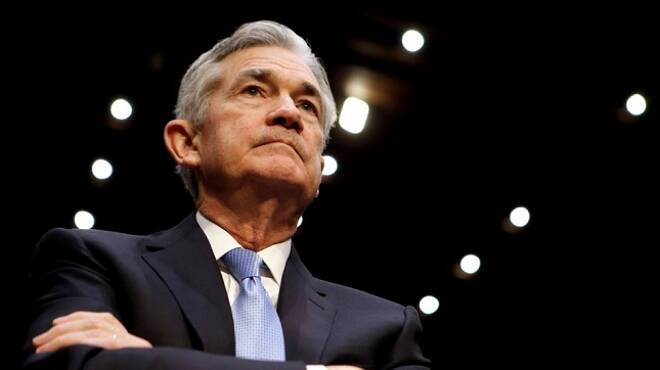Advertisement
Advertisement
Stocks Tumble Despite Dovish Fed Amid Recession Concerns
By:
The muted response in reaction to lower yields and the dovish Fed was fueled by concerns that the central bank was actually trying to stay ahead of a gradually weakening U.S. economy.
The major U.S. stock indexes finished lower last week, with volatility felt in the financials and industrial sectors. Significant price swings in Treasury yields also caught the eye of traders with the yield curve briefly inverting for the first time in twelve years, raising concerns about a recession despite a dovish Fed and slowing, but still-positive economic data.
The recent price action suggests the 10-year stock market rally may be tiring. The good news has been limited to a handful of stocks with the broad-based indexes facing potential headwinds due to slower growth expectations and rising global uncertainty.
The price action late in the week indicates that investors may be paying closer attention to the slowing global economy than the steep drop in global interest rates, which typically provide support for equities. We also see investors allocating more money to fixed income markets. On Friday, weaker-than-expected Euro Zone manufacturing data in combination with the Fed’s aggressively dovish stance produced the biggest drop in the 10-year Treasury yield in two years, while U.S. investment grade bonds rose the most in four years.
Fed policy is likely to continue to be the main driver of the price action, but in the meantime, Fed policymaker are going to have to face challenges from low inflation and slower U.S. economic growth as well as continuing global uncertainty.
The Fed Paused, but Stocks Went Down
During the early stages of the bull market when the Fed lowered rates, it usually green lit a stock market rally. Last week, however, after the Fed signaled it would pause its rate hikes and ease monetary policy pressure by keeping rates between 2.25% and 2.5%, and conclude winding down its massive bond portfolio in September, stocks rallied weakly.
The muted response in reaction to lower yields and the dovish Fed was fueled by concerns that the central bank was actually trying to stay ahead of a gradually weakening U.S. economy.
Fed Hit Its Mandates So It Can Pause
Investors may be wrong if they sold last week because of the fear of a gradually weakening U.S. economy. Looking at its mandates – a 2% inflation target and a 5% unemployment rate, the Fed hit its goals with its preferred inflation measure reaching 1.9% and the unemployment rate sitting at 3.8%.
Looking at it this way, the Fed is entitled to pause its rate hikes because its goals have been met and not because these expect a weaker economy.
Look for the Fed to take a “wait and see” approach to policy. Furthermore, the move by the Fed has put it in sync with the other major central banks which have also taken a pause in rate hikes. Overall, lower rates may allow the global economy to land softly before new growth begins.
Inverted Yield Curve and Recession
In the past, an inversion between 3-month T-bill rates and 10-year T-note rates has accurately predicted a recession. On Friday, they inverted for the first time since 2007 on the heels of weak economic data out of the Euro Zone. This doesn’t mean a recession is imminent, but studies have shown one can develop anytime from six months to three years.
The central bankers are hoping that lower global interest rates and borrowing costs will be enough to stimulate consumer spending and business investment. This may not suddenly improve the global economy, but it should lead to positive economic growth while providing support for equities.
Heightened Volatility Expected as Geopolitical Fears Remain at Forefront
Last week’s weak economic numbers in the Euro Zone indicate the global economic weakness has spread from China into Europe. However, although the trade dispute between the U.S. and China contributed to the poor showing, it can’t be blamed for all of it. The uncertainty over Brexit has certainly taken a toll.
The good news is, according to reports, U.S.-China trade negotiations are moving forward and there could be a trade deal in place shortly. Furthermore, while the timing of Brexit and method are unknown at this time, Friday’s extension of the March 29 deadline by two additional weeks gives the U.K and European Union more time to reach an agreement.
So over the short-run, we may see heightened volatility as the data is likely to continue to show a weakening global economy, but conditions could begin to improve during the second half of the year if the uncertainty over the trade dispute and Brexit disappears.
About the Author
James Hyerczykauthor
James Hyerczyk is a U.S. based seasoned technical analyst and educator with over 40 years of experience in market analysis and trading, specializing in chart patterns and price movement. He is the author of two books on technical analysis and has a background in both futures and stock markets.
Advertisement
